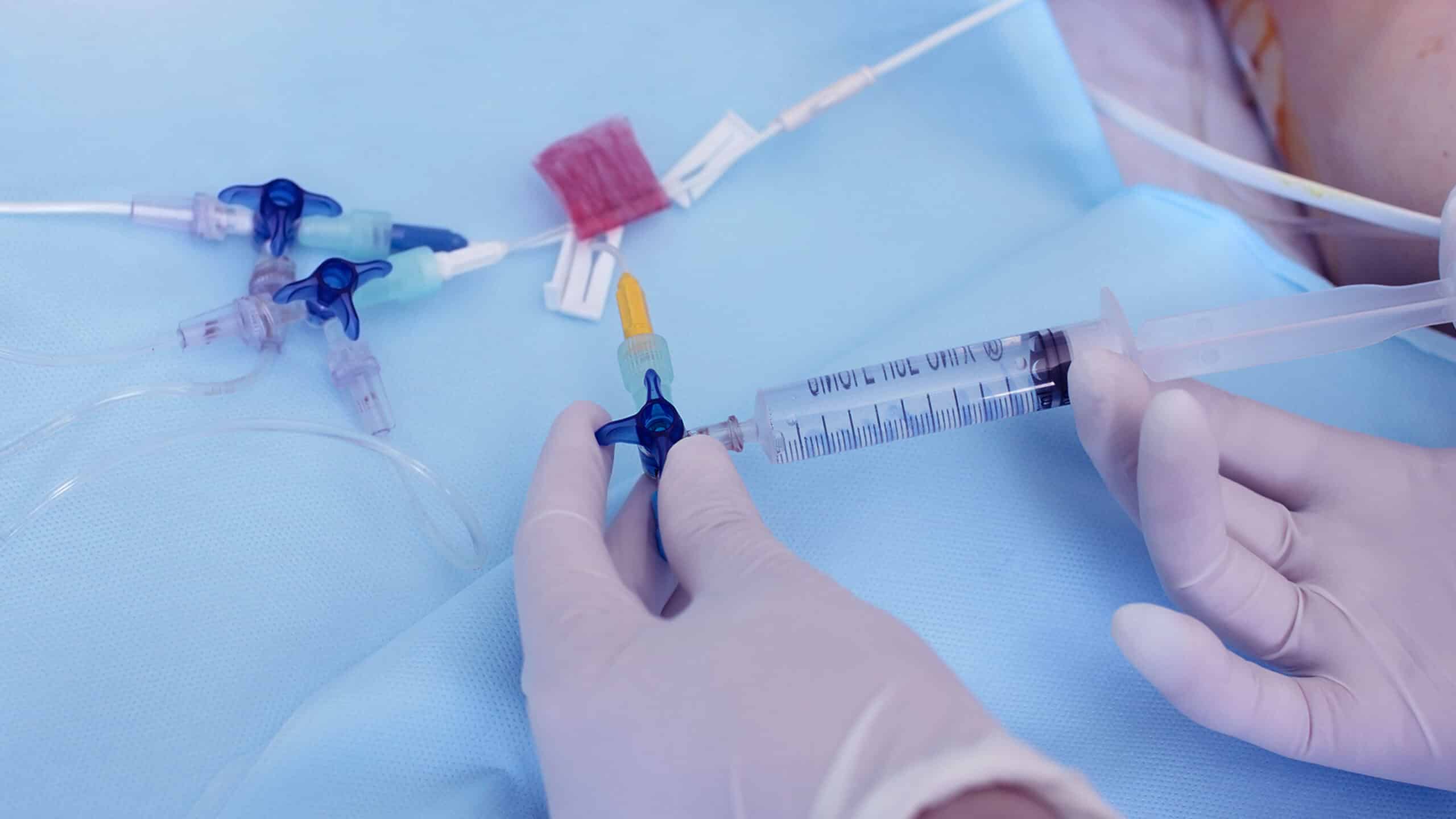We are no longer accepting new cases.
Nurse Assist Saline Flush IV Syringes are pre-filled with saline and are used in flushing out medical devices that use a needle or catheter to deliver medicines directly into a patient’s bloodstream. The FDA describes the devices as being used by healthcare providers in hospitals or clinics before and after drip medications are connected to a patient. (4)

In late 2016, the Centers for Disease Control and Prevention (CDC) began tracking an outbreak of B. cepacia after becoming aware of reports of bloodstream infections (bacteremia) occurring in five states. In January 2017, the CDC announced it was investigating a total of 162 B. cepacia-related cases, including seven deaths possibly associated with contaminated Nurse Assist Saline Flush IV syringes. (5)
If you were diagnosed with or had a relative die from a blood infection (bacteremia) or sepsis following treatment that used intravenous devices that were exposed to a contaminated Nurse Assist Saline Flush IV syringe, you may want to consider bringing a lawsuit to seek compensation for your or a loved one’s injuries.
Weitz & Luxenberg can help you determine your legal options, starting with a free consultation.
Risks and Symptoms of Bloodstream Infections
Bacteremia, a bacterial infection in the blood, ranks among the seven leading causes of death in North America and Europe. (6) A study examining 12 years of population data to investigate “long-term mortality and causes of death among bacteremia patients” was published in 2015. It found an association between bacteremia and increased risk of death that persisted for a decade after initial infection had been treated, when compared with matched controls. (7)

In its information regarding the recent B. cepacia outbreak, the CDC notes common symptoms of bloodstream infections may include: (8)
- Fever
- Chills or shivering
- Clammy or sweaty skin
- Confusion or disorientation
- Shortness of breath
- Increased heart rate
Bacteremia can lead to sepsis, a complication resulting from the body’s potentially life-threatening reaction to an infection. Sepsis can be difficult to diagnose and treat, and it can lead to tissue damage, organ failure, or even death. (9)
The National Institute of General Medical Science estimates over one million Americans develop sepsis every year, (10) with between 28% and 50% dying due to sepsis. (11) A 2017 study in the Journal of the American Medical Association found U.S. hospital readmission mean length of stay for patients initially admitted for the treatment of sepsis to be longer than readmission length of stay for certain other serious conditions, including acute heart attack, heart failure, pneumonia, and chronic obstructive pulmonary disease. (12) The U.S. Agency for Healthcare Research and Quality (AHRQ) reported septicemia was the most expensive condition in terms of hospital costs, totaling more than $20 billion in 2011. (13)
The National Institute of General Medical Science estimates over one million Americans develop sepsis every year, with between 28% and 50% dying due to sepsis.”
Weitz & Luxenberg wants to hear from people who were administered an intravenous infusion with a Nurse Assist Saline Flush IV Syringe prior to October 4, 2016, and were later diagnosed with a blood infection (bacteremia) or sepsis. The firm also wants to hear from people who had a relative die following IV infusion that involved exposure to a Nurse Assist Saline Flush IV Syringe.
You may have a right to compensation. A knowledgeable attorney can help you determine your legal options.
What Is B. cepacia?
B. cepacia complex is a family of bacteria that can be resistant to common antibiotics.
Named after its discoverer, Walter Burkholder, who first identified it as the culprit behind onion rot, B. cepacia (formerly known as Pseudomonas cepacia) (14) has been called a “microbial Jekyll and Hyde.” (15) Those with agricultural interests sought to develop it commercially as an antifungal agent to protect crops and forests, (16) while others saw potential for environmental applications, to degrade pollutants in soil and water. (17)
Several of these bio-control products containing different strains of B. cepacia were registered with the U.S. Environmental Protection Agency (EPA) in the 1990s but were withdrawn after examination of risk assessments. The EPA placed a moratorium on bio-control agents containing B. cepacia due to the threat posed to human health. (18)
While B. cepacia is not usually a risk for healthy people, it can cause infections in some patients, such as those with cystic fibrosis. (19) A 2011 study conducted in South Korea found a 41% mortality rate at 28 days for ICU patients infected with bacteremia caused by B. cepacia. (20)
Because B. cepacia can be resistant to common antibiotics, the CDC recommends that doctors make patient treatment decisions on a case-by-case basis. (21)
B. cepacia most often enters the body through the respiratory tract (22) and is notably associated with life-threatening risks to patients with cystic fibrosis. (23)
B. cepacia Outbreak Associated with Saline Flush IV Syringes
In 2016, the CDC reported it was working with federal and state agencies to track and investigate an outbreak of B. cepacia bloodstream infections that appeared to be associated with contaminated syringes made by Nurse Assist. (24)
In October 2016, the New York State Department of Health (NYSDOH) notified 54 long-term care facilities in the state that may have obtained potentially contaminated products potentially associated with reported cases of B. cepacia bloodstream infections. (25)
How Weitz & Luxenberg Can Help
If you developed a blood infection or sepsis, or have a relative who died after being exposed to Burkholderia cepacia (B. cepacia) after being administered an infusion via a Nurse Assist Saline Flush IV Syringe, Weitz & Luxenberg wants to hear from you.
Weitz & Luxenberg is a nationally recognized leader in the field of defective medical device litigations.
Weitz & Luxenberg can help you understand your legal options, beginning with a free consultation. Call us at (833) 977-3437 or fill out the contact form on this page and one of our client representatives will be in touch shortly.
